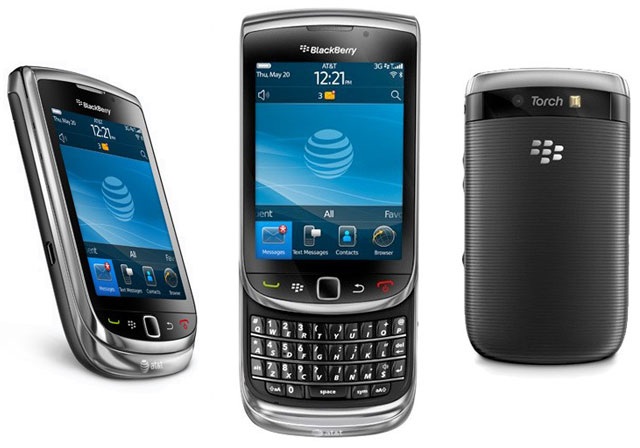Research in Motion have been publicly developing this phone for 18 months, and have billed it as “one of the most important phone launches since the first Blackberry”. That means the press have a natural storyline – either it matches this hyperbole and truly is the greatest phone the world has ever seen, or it falls short and the press can have a little bit of a rip-apart session on “the once great company RIM.”
From what I can see, the hardware is respectable. Ok, it doesn’t have the 800x480 screens of some of the larger handsets, but it carries a decent sized battery and camera, with Wi-fi, 3G and Bluetooth connectivity, has a capacitive layer as well as the slide out keyboard, and looks like a Blackberry.
What’s important here, and the lesson for Nokia, Samsung, and everyone else launching a new device, is that the Torch, which is clearly a smartphone, does not match the perception of what many online journalists consider to be a top-end smartphone. And that means that the overriding message that has come out of all the coverage in the first 24 hours, when readers are forming initial opinions based on the media coverage, is that RIM have made a competent device that just about matches the existing market, but doesn’t do anything “new”.
Rewind to the announcement of the Nokia N8 and the coverage… which pointed out a merely refreshed operating system, specifications that didn’t meet (or beat) the highest specification priced smartphones from other companies, and the paucity of developer support in the US market. All the article introductions in the mainstream press and gadget blogs for the N8 seem to have been copied for the Blackberry Torch!

My big takeaway from the event is that RIM’s message of “This phone is better” was not enough. There needs to be a solid marketing message that’s attractive. It’s likely that upcoming Symbian smartphones will not match the top end Android and Apple phones in spec – because they don’t need to. But the manufacturers need to avoid being drawn into a numbers battle, because in a number of fashionable areas it loses – content in the app store, screen resolution and active developers being three. Neither should it fight with the numbers it does win on, because that highlights the former.
There’s a range of Symbian^3 devices coming up from Nokia and other Symbian partners. In Nokia’s case, the internals are likely to be based on a similar platform to the N8. Any factual comparison will be “N8 with a keyboard” “N8 without Wi-fi” and so on.
Nokia will need to get over the differences in use, to show that the device does just work and can make a real difference to people using it. Palm managed this when the first Windows Mobile devices came out to challenge the Palm III machines, they made sure that specs were never mentioned in head to heads, but functions and real world results were. Microsoft, of course, tried to pull them into a spec war because they had bigger numbers in that period, but Palm were the victors, in part due to smart marketing.
You can’t tell journalists what to write (they would likely do an “Company X told us to write this” article, negating the whole thing) but you can frame a launch and nudge them to the positives of your device. You should be working with them before the launch to set expectations and areas that will be reinforced at the launch.
I get the feeling RIM focussed on the hardware and the physicality of the Torch, and not the style, the emotion or the attractiveness of the phone. Have they made a phone that is “the best they can offer”? Yes. Have they made a flagship device that people lust after it and want? The jury is out on that one. Have they got the press and a buzz building up around the device? It doesn’t look like it.
So we come back to the argument of how important is good coverage of your launch and device, both online and in the traditional press. Personally I think it’s pretty important, because that’s what many pay attention to. Smartphones have matured, and any technological updates are more iterative than anything else. Going for a bigger screen? Not special. Give it a fancy name (like a retina display) and show why it’s important, and people start paying attention. Now that the hardware is a given, why are many manufacturers still locked into an older style of marketing?
And is this going to change in the near future?
-- Ewan Spence, Aug 2010.
